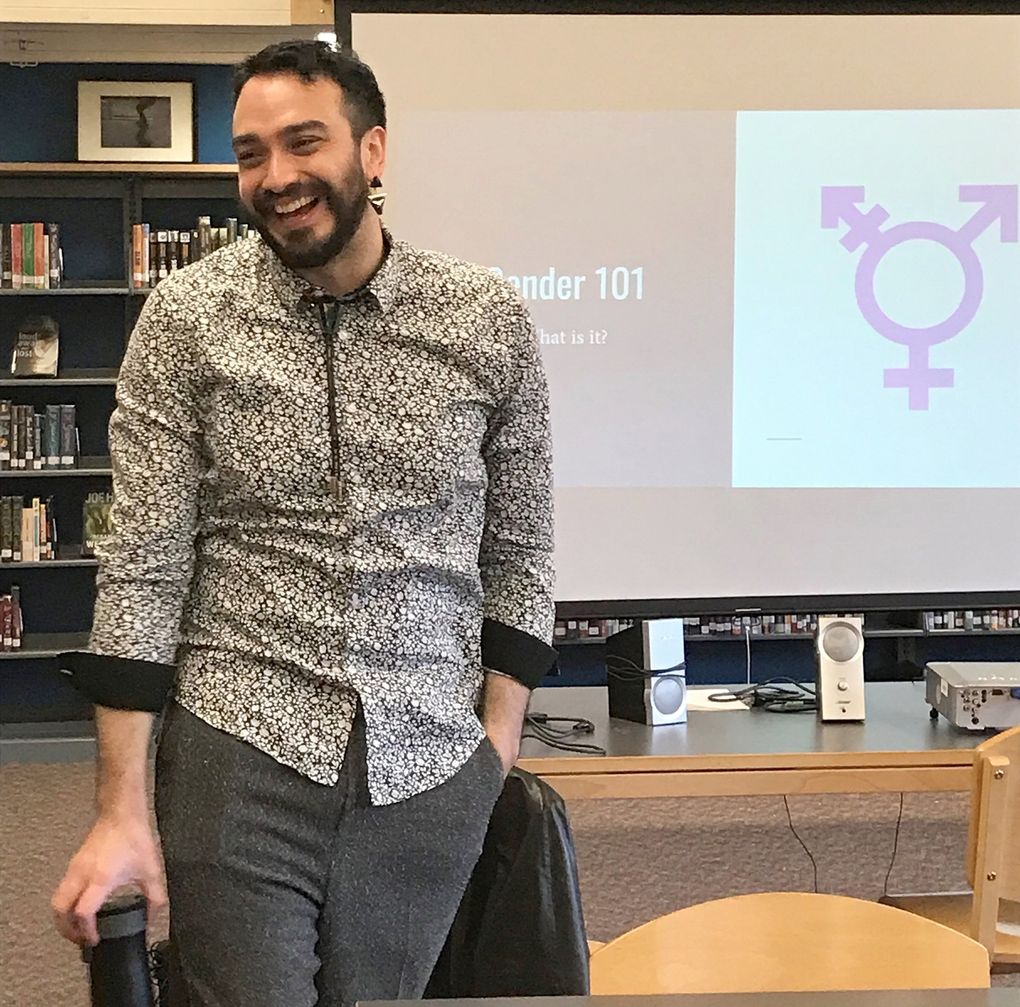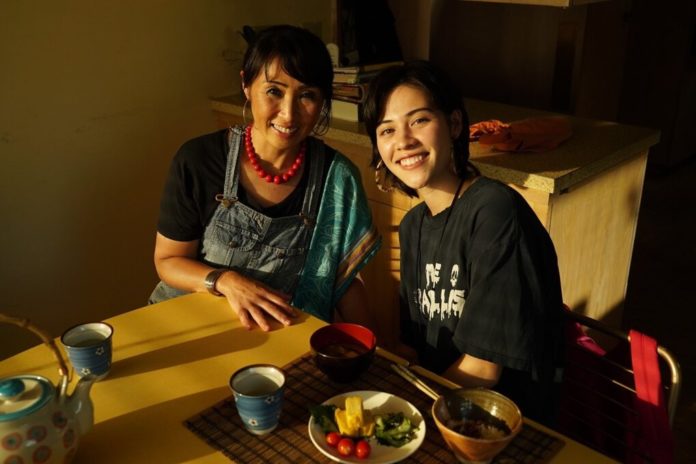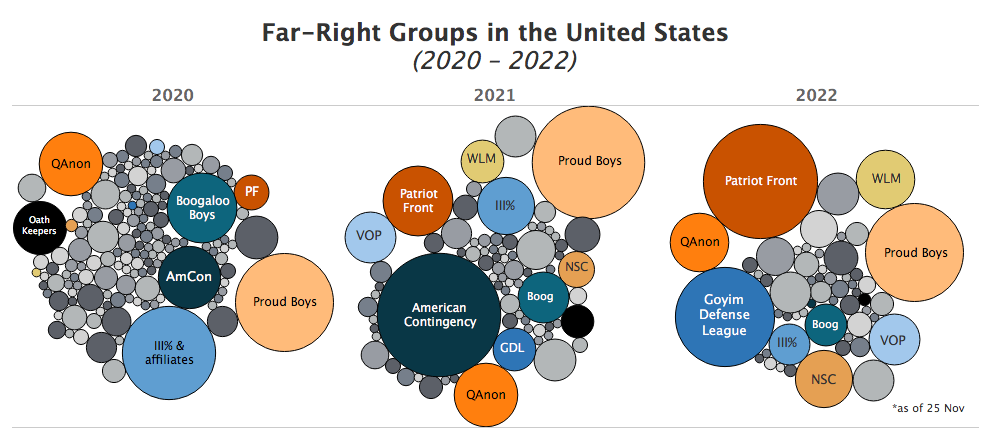Abby Akari Alishio first came out as queer three years ago.
“I started crying before I even said anything,” said Alishio.
She was 19, and a couple of years out of West Seattle High School, where she’d spent four years feeling like she couldn’t safely explore her queerness or learn about queer community.
“It’s not that it wasn’t accepting, there just wasn’t really a space for those conversations to happen,” Alishio said. “Pronouns were definitely not a thing. There was one trans kid, and I just remember people staring them down, like this silent bullying.
“It wasn’t the most diverse, it wasn’t the most queer-friendly,” she said.

Now a fifth-year film studies student at the University of Washington, Alishio finds herself in awe of the next generation of young people and how at ease they are with queer identity and culture.
On the set of “Hapa,” a semiautobiographical film Alishio created, she marvels at how casually some of the actors who are 12 to 14 years old use they/them pronouns.
“For me, that didn’t exist,” she said. “They were so open and proud. I loved the energy they brought to the set.”
Alishio feels caught between two experiences, two generations — one in which young people still largely didn’t talk about being queer, and the next generation in which terms like “nonbinary” are part of everyday parlance.
While many parts of the U.S. and most of the world remains hostile toward LGBTQ+ people, there are signs of an evolution. According to a 2021 Gallup Poll, 5.6% of U.S. adults now identify as LGBTQ+ — up from 4.5% in 2020. Also, one in six Generation Z adults (defined by Gallup as those born between 1997 and 2002) identifies as LGBTQ+. (LGBTQ+ stands for lesbian, gay, bisexual, transgender and queer/questioning, with the + denoting everything along the gender and sexuality spectrum.)
This generational shift is trickling down to today’s youth. Brennon Ham, the health education specialist for Seattle Public Schools, helps to manage Gender and Sexuality Alliances across the entire school district. In Ham’s seven years at SPS, he’s noticed a few trends: Students are starting to come out in their gender (such as nonbinary or trans) more often than in their sexuality (such as gay or lesbian), and families of younger kids tend to be more supportive than the families of middle and high school students.
“It gives me hope that even for the kids who are not yet out, who don’t yet feel safe coming out even in our schools, that they have good models to look to for what being out, being healthy [and] being safe can be in the future,” said Ham. “Even for students who aren’t safe at home and won’t be safe at home, [I hope] that they can envision possibilities far beyond school because of school. [I hope] that school creates those conditions where they can dream.”
With National Coming Out Day coming up on Oct. 11, we talked to school-age queer Seattleites and asked them to reflect on what it’s like to come out at a time of social change, but when it is still be dangerous to be openly queer in the majority of the world. They talked about the difficulties that remain for queer youth in one of the more progressive cities in the country, and their hopes for a future where maybe, one day, coming out will be a celebrated rite of passage or no longer necessary at all.
Coming out at school
Paxton Ling was in fifth grade when he told his class that he was trans — the teacher even helped explain it to everyone, he says, recalling the teacher saying something along the lines of, “We thought that Paxton was a girl, but Paxton is actually a boy.”
“Everyone pretty much supported me,” said Ling, now a sophomore at Summit Atlas, a public charter school in West Seattle. “Most of my peers are queer, so they understood.”
At school, Ling said teachers and staff ask what students’ pronouns are and what pronouns they should use with parents and family versus with their classmates at school.
Even in the pandemic, Ling says he’s grown closer to his friends. With a limited social circle due to social distancing, they spend more time together talking about topics such as being queer.
It hasn’t all been rosy, of course. Ling has had difficult experiences in the past with classmates who didn’t understand his trans identity. But for the most part, everyone has been supportive, he says.
“It’s kind of hard to imagine that being queer was that hated [in the past],” said Ling. “I know it’s not perfect right now, but it’s a lot more accepted where I am in Seattle. I feel more safe being openly queer.”
When Luna Crone-Barón, a sophomore at The Center School in Seattle, shared her trans and queer identities with her parents, she felt completely supported. Her mother’s professional work centers on gender equality and HIV and AIDS, so Crone-Barón, 15, grew up regularly meeting and talking to other trans and queer people.
At school, it was different. She has endured bullying and rude comments from peers since she was in preschool. But when she came out as trans to her fifth grade class, students started a campaign to have more books featuring trans characters included in their library. However, several members of the Parent Teacher Association tried to vote to have such books removed from the library altogether.
For Chief Sealth International High School freshman Cait McKnight, who recently came out as nonbinary, the experience was the complete opposite. McKnight’s peers have made rude comments, refused to use McKnight’s they/them pronouns, or told them that they’re a girl. But, McKnight says, they feel completely supported by faculty and staff.
While some of today’s queer Seattle youth feel more supported being out at school than their forebears, they also know that many of their peers still face extraordinary challenges when coming out. They know that even in other parts of the state, coming out isn’t always supported within a school environment.
Originally from a town in central Washington outside Seattle, Daneil (pronounced Dah-neel) Newcomb, 30, was the only person in her friend group who was queer. She says she was “yanked out of the closet” in eighth grade when her parents caught her with her girlfriend, and they forbade her from seeing her girlfriend.
When she moved to Seattle years later, Newcomb found community as a part of Diverse Harmony, an LGBTQ+ youth choir in Seattle, and felt safer being herself. She’s now a board member for the group.
“The political climate [where I’m from] is very different,” said Newcomb. “Being out and proud [outside Seattle], it felt like there was a price tag that came with it. … If you’re going to be out and proud in certain parts of the country, it can cause you harm or even cost you your life. Living in Seattle frees you from that narrative to a degree.”
With a few friends who can’t come out because they don’t feel safe at home, Ling knows how lucky he was to have the experience he did.
And while the mostly supportive experiences that Ling, Crone-Barón and McKnight describe at school might not be perfect, they are still wildly different from the generations of LGBTQ+ people who, like Newcomb, never felt safe enough to express their full queer identities at school at all.
Although sexual orientation and gender identity discrimination is prohibited federally, only 22 states and Washington, D.C., prohibit discrimination based on sexual orientation and gender identity, according to the Human Rights Campaign’s 2020 State Equality Index. And while Washington state has the fifth-highest self-identified LGBTQ+ population, at 5.2%, queer kids who live in states such as Alabama, for instance — with the nation’s fifth-lowest self-identified LGBTQ+ population at 3.1% — face a vastly different atmosphere. At least six states — Alabama, Louisiana, Mississippi, Oklahoma, South Carolina and Texas — still restrict the teaching of LGBTQ+ topics in schools.
Creating safe spaces at school
Ham is one of the many people working to foster a welcoming environment for generations of Seattle Public Schools’ LGBTQ+ students to come.
Ham came out as bigender (an identity in which a person expresses two genders) at age 3, and as queer at age 11. With no family support, Ham ended up homeless and endured physical and sexual violence. School was little better. As a young, queer Latinx student growing up in the suburbs just outside Washington, D.C., Ham did not feel safe going to Gay Straight Alliance (now called Gender and Sexuality Alliance) meetings at school.
“In schools, as a mixed Latinx person, as a queer person, as a nonbinary trans person, I didn’t feel safe. I didn’t feel like any of the spaces worked for me,” said Ham, now 32. “I wasn’t my full self and didn’t get to explore that more fully until I graduated [from high school].”

Now, Ham manages GSAs for the whole Seattle Public Schools district, alongside other duties, such as developing LGBTQ-affirming school policies and building support systems for LGBTQ+ students.
Ham has supported students in creating spaces led by queer and trans students of color, and he’s part of the reason students like Ling and Crone-Barón are able to have supportive experiences at school.
“I wanted to prevent the negative health and wellness outcomes that I had in life,” said Ham.
All Washington state students from kindergarten through 12th grade already have the right to assert their names and pronouns without parent permission and to expect that identity to be respected by staff and peers. People like Ham, and 20-year SPS veteran health education manager Lisa Love — the district contact for the SPS policy — help enforce the policy and support students through any issues.
Still, Ham fears that virtual schooling during the pandemic has caused a setback in attitudes and policy development that the district could take years to recover from.
With virtual schooling, students who were out at school but were not safe being out at home had to essentially go back in the closet, said Ham.
To protect queer students in unsafe home situations, Ham helped schools establish safety standards, such as allowing students to keep their Zoom cameras off, providing students with headphones to keep their conversations semiprivate, and even operating GSA meetings under secret names.
Nonetheless, missing out on environments where they feel safe to be themselves can impact students confidence and cause a ripple effect.
“The safer our students feel, the more nimble and powerful they become and the more they can change the institutions,” said Ham. “These are really important developmental years for students, so I can’t imagine it’s not going to be without significant cost to them.”
Ham estimates it will be a couple of years before progress on LGBTQ+ affirmative schooling in Seattle will return to where it was pre-pandemic.
Of course, it’s a different story in school districts where there is no one like Ham championing LGBTQ+ students rights, or in places where the political climate makes it unsafe for queer people to live openly.
As recently as 2017, LGBTQ+ people were four times more likely than cis and straight people to experience violence, including rape and sexual assault, according to an analysis of 2017 National Crime Victimization Survey data. Already this year, 37 trans people — the majority of whom were Black trans women — have been violently murdered in the U.S., according to the Human Rights Campaign.
“We are still fighting for our lives and we are still fighting for our right to exist,” said Crone-Barón.
That’s why youth like Crone-Barón still feel pulled to follow in the footsteps of the many LGBTQ+ activists who came before them and pushed for the rights and acceptance that exists today.
“At least some of us are able to be loved and accepted by the people around us, which is a reality that so many people in my parents’ and grandparents’ generations did not have,” said Crone-Barón. “I would not be here with the rights that I have and the ability to exist without Black trans women.”








